What You Need To Know About Breathing Exercises: 10 Simple But Powerful Breathing Exercises You Can Do Anywhere, Anytime
The Power of Breathing Exercises: Enhance Your Well-being and Reduce Stress
Overview
Have you ever heard of Breathworks or Intentional Breathing Exercises? In the hustle and bustle of our daily lives, we often forget about the simple
Breathing is an essential function of our bodies, but have you ever considered the impact of intentional breathing? Breathwork, a practice that involves controlled breathing techniques, has gained significant popularity in recent years for its ability to improve overall health and reduce stress levels. In this article, we will explore the benefits of breathing exercises and provide you with 10 simple techniques that you can easily incorporate into your daily routine.
What are Breathwork or Breathing Exercises?
A breathing exercise is a deliberate and structured activity that focuses on controlling and manipulating one’s breath. These exercises often involve specific techniques or patterns of inhalation and exhalation, aiming to achieve various physical, mental, and emotional benefits. Breathing exercises are commonly used to manage stress, anxiety, improve focus, enhance relaxation, and promote overall well-being.
Breathing exercises can be valuable tools for individuals seeking to enhance their mental and physical well-being. As with any health practice, it’s advisable to consult with a healthcare professional if you have specific health concerns or conditions.
The Importance of Breathing Exercises
Breathwork, also known as controlled or intentional breathing, involves consciously regulating your breathing patterns to positively influence your
Breathing exercises have been shown to have numerous benefits, including improved cognitive performance, reduced stress, and increased physical endurance. They promote a balanced mind-body connection, allowing individuals to find calmness and relaxation amidst the chaos of daily life. The best part is that anyone can practice breathing exercises, anytime and anywhere, without any cost involved.
The Benefits of Breathing Exercises
Breath exercises are renowned for their positive impact on various aspects of health and well-being. Research has shown that engaging in regular breathing exercises can lead to improved mood, increased relaxation, reduced anxiety and depression, and enhanced heart rate variability. Let’s delve deeper into the benefits of breathing exercises:
1. Stress Reduction
In our fast-paced modern world, chronic stress has become a prevalent issue. Fortunately, breathing exercises offer a simple yet effective way to combat stress. By consciously regulating your breath, you can stimulate the parasympathetic nervous system, also known as the “rest and digest” response. This helps bring your body back to a state of calm and counteracts the effects of chronic stress.
2. Improved Mental Health
Breathwork techniques have a profound impact on mental health. By focusing on your breath, you can quiet the mind, reduce racing thoughts, and let go of worries and anxieties. Regular practice of breathing exercises can help alleviate symptoms of anxiety and depression, providing a natural and accessible tool for mental well-being.
3. Enhanced Physical Endurance
Breathing exercises can significantly improve physical endurance and performance. Techniques such as pursed-lip breathing and alternate nostril breathing have been found to increase respiratory endurance, making physical activities easier to manage. This is especially beneficial for individuals with conditions such as chronic obstructive pulmonary disease (COPD) who may experience shortness of breath during exercise.
 4. Increased Relaxation
4. Increased Relaxation
Conscious deep breathing activates the body’s relaxation response, leading to a sense of calm and tranquility. When you engage in slow, paced breathing, you activate the parasympathetic nervous system, which helps to counteract the effects of the sympathetic nervous system, responsible for the “fight or flight” response. This relaxation response can help reduce muscle tension, lower blood pressure, and promote overall relaxation.
5. Improved Focus and Clarity
Breathing exercises can enhance focus, concentration, and mental clarity. By bringing your attention to your breath, you cultivate mindfulness and present-moment awareness. This can help you stay focused on the task at hand, increase productivity, and improve cognitive performance.
6. Better Sleep Quality
If you struggle with falling asleep or staying asleep, breathing exercises can be a game-changer. The 4-7-8 breathing pattern, popularized by Dr. Andrew Weil, is particularly effective for promoting relaxation and better sleep. By practicing this technique, you can calm your mind, reduce anxiety, and prepare your body for a restful night’s sleep.
7. Improved Lung Function
Deep breathing exercises help expand lung capacity and promote optimal oxygen exchange. Shallow breathing, which is common in our daily lives, limits the amount of oxygen reaching our lungs. By practicing deep breathing techniques, you can fully fill your lungs with air, increasing oxygen intake and improving overall lung function.
8. Emotional Regulation
Breathing exercise techniques can be powerful tools for managing and regulating emotions. By focusing on your breath, you can create space between your thoughts and emotions, allowing for a more balanced and mindful response to challenging situations. This can lead to greater emotional resilience and a sense of inner calm.
9. Increased Energy and Vitality
Conscious breathing can also boost energy levels and vitality. Deep, diaphragmatic breathing helps oxygenate the body, providing a natural energy boost. By regularly engaging in breathing exercises, you can enhance your overall sense of well-being and vitality throughout the day.
10. Accessible and Cost-Free
One of the greatest advantages of breathing exercises is their accessibility. You can practice these techniques at any time and in any place without the need for special equipment or a dedicated space. Whether you’re at home, work, or even in transit, you can tap into the power of breathing exercises to find calmness and improve your well-being.
Now that we’ve explored the various benefits of breathing exercises, let’s dive into 10 simple techniques that you can start practicing today.
10 Simple Breathing Exercises You Can Do Anywhere, Anytime
- Belly Breathing: This technique involves placing your hand on your abdomen and taking deep breaths, allowing your belly to rise and fall with each breath. It promotes relaxation and is particularly helpful for calming the mind before bedtime.
- Box Breath: Also known as four-square breathing, this technique involves inhaling to a count of four, holding the breath for four counts, exhaling for four counts, and holding the breath out for four counts. Box breath can help clear the mind and induce a state of deep relaxation.
- Alternate Nostril Breathing: This technique involves breathing through one nostril at a time, alternating between each side. It helps balance the energy in the body, promotes focus, and reduces stress.
- Pursed-Lip Breathing: Pursed-lip breathing involves inhaling deeply through the nose and exhaling slowly through pursed lips. This technique helps control shortness of breath and can be beneficial for individuals with respiratory conditions.
- Diaphragmatic Breathing: Also known as belly breathing, diaphragmatic breathing involves breathing deeply into the diaphragm, allowing the abdomen to rise and fall. It promotes relaxation and helps improve lung function.
- 4-7-8 Breath: This technique, popularized by Dr. Andrew Weil, involves inhaling through the nose for a count of four, holding the breath for a count of seven, and exhaling through the mouth for a count of eight. It is particularly effective for reducing anxiety and promoting better sleep.
- 5-4-3-2-1 Breath: This technique combines breathwork with muscle relaxation. Inhale deeply, then exhale while focusing on relaxing different parts of your body, counting down from five to one. It promotes overall body relaxation and stress relief.
- Square Breathing: Similar to box breath, square breathing involves inhaling, holding, exhaling, and holding the breath out for equal counts. This technique helps bring balance and calmness to the mind and body.
- Humming Bee Breath: This technique involves inhaling deeply through the nose and exhaling while making a humming sound. It helps to calm the mind, reduce anxiety, and promote a sense of peace and tranquility.
- Visualization Breath: This technique combines deep breathing with visualization. As you inhale, imagine filling your body with positive energy or envision a peaceful scene. As you exhale, release any tension or negativity. This technique can help promote relaxation and reduce stress.
Remember, these breathing exercises can be customized to suit your needs and preferences. You can choose the techniques that resonate with you and incorporate them into your daily routine. Start with just a few minutes each day and gradually increase the duration as you become more comfortable.
How To Prepare for Breathing Exercises
Preparing for breathing exercises involves creating a conducive environment, adopting a comfortable posture, and having a focused mindset. Here are some steps to help you prepare for effective breathing exercises:
- Choose a Quiet Space:
- Find a quiet and comfortable space where you won’t be easily disturbed. This could be a room, a corner of a quiet park, or any place where you can have some privacy.
- Wear Comfortable Clothing:
- Dress in loose, comfortable clothing that allows for unrestricted movement. This helps ensure that your breath is not constrained by tight clothing, allowing for a more natural and relaxed experience.
- Sit or Lie Comfortably:
- Choose a posture that suits you best, whether it’s sitting on a comfortable chair, cushion, or lying down. Keep your back straight to allow for optimal airflow and to prevent discomfort during longer sessions.
- Turn Off Distractions:
- Silence your phone, turn off notifications, and create a technology-free zone. Minimizing external distractions allows you to focus inward during your breathing exercises.
- Set an Intention:
- Before starting your breathing exercises, set a positive intention or goal for the session. Whether it’s to relax, focus, or release tension, having a clear purpose can enhance the effectiveness of your practice.
- Start with Mindful Awareness:
- Begin with a few moments of mindful awareness, paying attention to your current state, and letting go of any mental chatter. This helps in transitioning from the external environment to a more focused internal state.
By taking these steps to prepare for your breathing exercises, you create a supportive foundation for a more mindful and effective practice. Adjust these recommendations based on your personal preferences and the specific breathing exercise you plan to engage in. Remember, the key is to create an environment that allows you to fully engage with your breath and the present moment.
How To Conclude Breathworks Exercises
Concluding a session of breathing exercises is as important as the practice itself. It allows for a smooth transition back to your regular activities and ensures that you carry the benefits of the exercises with you. Here are some steps you can follow to conclude your breathing exercises:
- Gradual Transition:
- Ease out of the breathing exercises gradually. If you were engaged in deep or slow breathing, start to transition to your normal breathing pattern. Allow the breath to return to its natural rhythm.
- Reflect and Acknowledge:
- Take a moment to reflect on how you feel after the breathing exercises. Acknowledge any changes in your mental or emotional state. This reflective pause helps in integrating the benefits of the practice.
- Gentle Movement:
- If you’ve been sitting or lying down, introduce gentle movements to awaken your body. Stretch your limbs, roll your shoulders, or perform any light stretches that feel comfortable.
- Mindful Awareness:
- Bring mindful awareness to the present moment. Notice your surroundings, the sounds, and the sensations in your body. This helps in transitioning from a focused internal state to an awareness of the external environment.
- Express Gratitude:
- Consider expressing gratitude for the time you dedicated to your well-being through breathing exercises. Gratitude can enhance the positive impact of the practice.
- Set an Intention for the Day:
- As you conclude your breathing exercises, set a positive intention for the remainder of your day. Whether it’s carrying a sense of calm, focus, or positivity, framing your mindset can influence your overall well-being.
- Hydrate:
- Drink a glass of water to rehydrate your body. Breathing exercises may subtly increase your metabolic rate, and hydration is crucial for maintaining overall health.
- Practice Mindfulness in Daily Activities:
- Carry the mindfulness cultivated during the breathing exercises into your daily activities. Be present in whatever you do, whether it’s work, chores, or leisure.
Remember, the conclusion of your breathing exercises is an opportunity to integrate the positive effects into your daily life. By incorporating these steps, you create a mindful and intentional transition that can enhance the overall impact of your breathing practice.
The Risks and Dangers of Breathing Exercises
While breathing exercises are generally safe and offer numerous benefits, it’s essential to be aware of potential risks, especially for individuals with certain health conditions. Here are some considerations and potential risks associated with breathing exercises:
- Hyperventilation:
- Rapid or deep breathing, as seen in some breathing exercises, can lead to hyperventilation. This may result in symptoms such as dizziness, lightheadedness, and tingling sensations. It’s important to practice breathing exercises mindfully and avoid overdoing it.
- Respiratory Conditions:
- Individuals with certain respiratory conditions, such as asthma or chronic obstructive pulmonary disease (COPD), should approach breathing exercises with caution. Consultation with a healthcare professional is advisable to ensure that the chosen exercises are safe and suitable.
- Cardiovascular Conditions:
- Some breathing exercises can temporarily affect blood pressure and heart rate. Individuals with cardiovascular conditions or hypertension should consult with their healthcare provider before engaging in certain techniques.
- Dizziness or Fainting:
- Certain breathing exercises, especially those involving rapid changes in breath patterns, may cause dizziness or fainting. It’s important to start slowly, gradually increase intensity, and stop if any adverse effects occur.
- Mindfulness Challenges:
- For some individuals, focusing on the breath may trigger anxiety or discomfort. It’s crucial to approach mindfulness practices with an open mind and, if needed, seek guidance from a mental health professional.
- Pregnancy:
- Pregnant individuals should exercise caution with breathing techniques that involve breath retention or significant changes in oxygen levels. It’s advisable to consult with a healthcare provider to ensure the safety of the chosen exercises.
It’s important to note that the risks associated with breathing exercises are often minimal, and for many individuals, the benefits far outweigh the potential drawbacks. However, for those with underlying health conditions, pregnant individuals, or anyone uncertain about their suitability for specific techniques, seeking advice from a healthcare professional is advisable. Always listen to your body and modify or discontinue any exercise that causes discomfort or adverse reactions.
After Thoughts
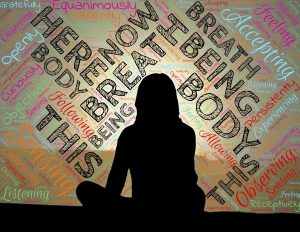
For natural and healing remedies, products, and supplements to help you live your most optimal healthy life, visit our store here!
Remember: Own Your Health!
If you enjoyed the information presented in this article, Please Share It. Help us reach more people and keep this website going! Thank you!
Note: The information provided in this article is for educational purposes only and should not be considered medical advice. Please consult with a healthcare professional or registered dietitian before making any significant changes to your diet or lifestyle.
References
- https://www.nhs.uk/mental-health/self-help/guides-tools-and-activities/breathing-exercises-for-stress/
- Weil, A. (2019). The 4-7-8 Breath: Health Benefits & Demonstration. https://www.drweil.com/health-wellness/body-mind-spirit/stress-anxiety/breathing-three-exercises/
- SEALFIT. (2021). Box Breathing: Techniques to Improve Your Focus and Performance. https://sealfit.com/box-breathing-techniques-improve-focus-performance/
- Harvard Health Publishing. (2015). Relaxation techniques: Breath control helps quell errant stress response. https://www.health.harvard.edu/mind-and-mood/relaxation-techniques-breath-control-helps-quell-errant-stress-response
- American Institute of Stress. (n.d.). The Benefits of Deep Breathing. https://www.stress.org/the-benefits-of-deep-breathing
- Shetty, S. (2019). Nadi Shodhana Pranayama: A mini review. https://www.ncbi.nlm.nih.gov/pmc/articles/PMC7027164/
- Mindful. (n.d.). A Guided Meditation for Awareness of Breath. https://www.mindful.org/a-guided-meditation-on-the-breath/
- Brown, K. W., & Ryan, R. M. (2003). The benefits of being present: mindfulness and its role in psychological well-being. Journal of Personality and Social Psychology, 84(4), 822–848. https://doi.org/10.1037/0022-3514.84.4.822
- Kwekkeboom, K. L. (2010). Cancer symptom management: State of the art. Journal of the National Cancer Institute. Monographs, 2010(41), 32–39. https://doi.org/10.1093/jncimonographs/lgq010
- Telles, S., Sharma, S. K., & Balkrishna, A. (2012). Blood pressure and heart rate variability during yoga-based alternate nostril breathing practice and breath awareness. Medical Science Monitor Basic Research, 18(1), CR1–CR9. https://doi.org/10.12659/MSMBR.882326
- Mark, G., Iqbal, S. T., Czerwinski, M., & Johns, P. (2018). Focused, Aroused, but so Distractible: Temporal Perspectives on Multitasking and Communications. Proceedings of the ACM on Human-Computer Interaction, 2(CSCW), 1–25. https://doi.org/10.1145/3274437
- Langer, E. J. (1989). Mindfulness. Addison-Wesley.
- Kabat-Zinn, J. (1994). Wherever You Go, There You Are: Mindfulness Meditation in Everyday Life. Hachette Books.
- American Lung Association. (n.d.). Hyperventilation. https://www.lung.org/lung-health-diseases/lung-disease-lookup/hyperventilation
- National Heart, Lung, and Blood Institute. (2021). COPD. https://www.nhlbi.nih.gov/health-topics/copd
- American Heart Association. (n.d.). High Blood Pressure. https://www.heart.org/en/health-topics/high-blood-pressure
- Mayo Clinic. (2021). Hyperventilation. https://www.mayoclinic.org/diseases-conditions/hyperventilation/symptoms-causes/syc-20372378
- Creswell, J. D. (2017). Mindfulness Interventions. Annual Review of Psychology, 68, 491–516. https://doi.org/10.1146/annurev-psych-042716-051139
- American College of Obstetricians and Gynecologists. (2021). Exercise During Pregnancy. https://www.acog.org/womens-health/faqs/exercise-during-pregnancy
- Emmons, R. A., & McCullough, M. E. (2003). Counting blessings versus burdens: An experimental investigation of gratitude and subjective well-being in daily life. Journal of Personality and Social Psychology, 84(2), 377–389. https://doi.org/10.1037/0022-3514.84.2.377
- Sheldon, K. M., & Lyubomirsky, S. (2006). How to increase and sustain positive emotion: The effects of expressing gratitude and visualizing best possible selves. Journal of Positive Psychology, 1(2), 73–82. https://doi.org/10.1080/17439760500510676
- Popkin, B. M., D’Anci, K. E., & Rosenberg, I. H. (2010). Water, hydration, and health. Nutrition Reviews, 68(8), 439–458. https://doi.org/10.1111/j.1753-4887.2010.00304.x

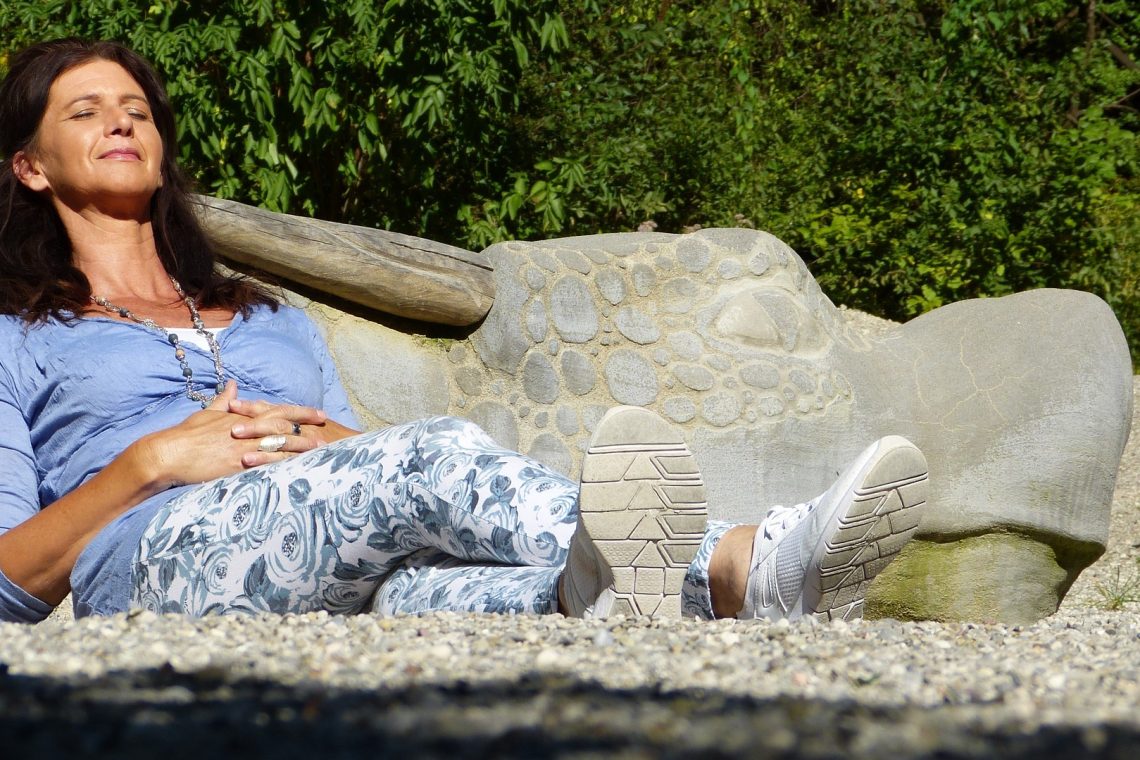
 4. Increased Relaxation
4. Increased Relaxation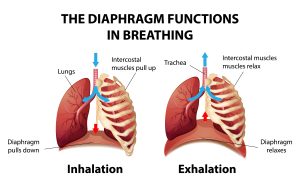











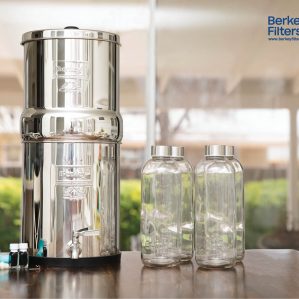

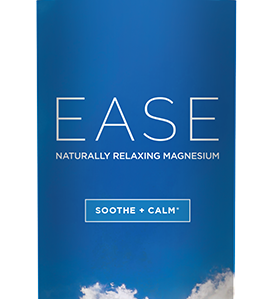












0 Comment